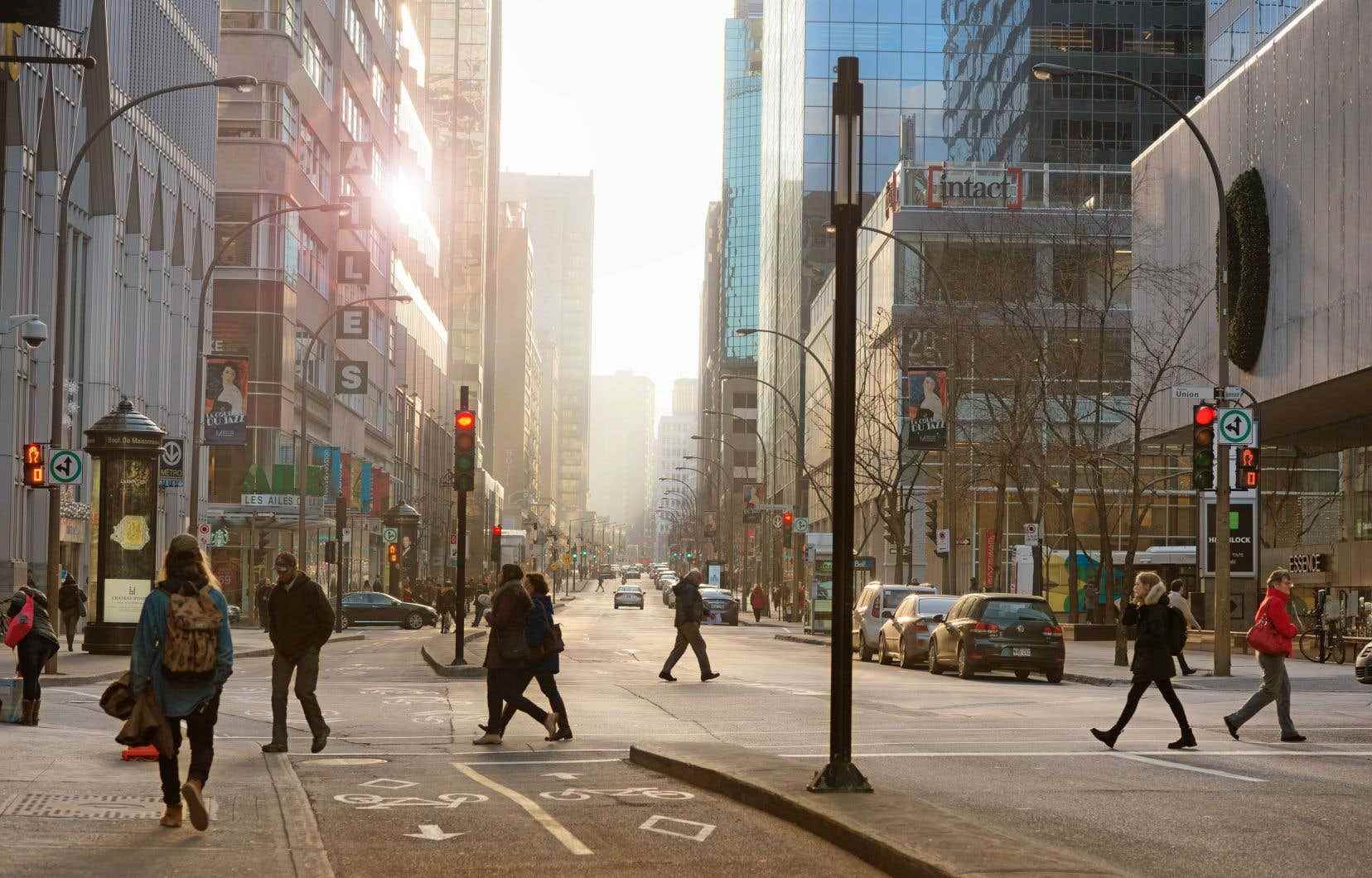Montreal’s economy has done remarkably well in recent years, but it must change course without further delay, admit the region’s political, economic and social players, who are calling for an urgent common shift “towards a more productive, more inclusive and greener”.
Long lagging behind, the employment rate in the region of just over 4 million people has now caught up with and even exceeded that of its rival Toronto, as well as the Canadian and American averages. And seven years ago, we thought we were ambitious to aim for an average annual growth rate of 1% in gross domestic product (GDP) per capita, when we probably reached 1.5% despite the COVID pandemic. -19.
This fine performance was due in particular to the attractiveness that Montréal exerted on businesses due, in particular, to its pool of skilled workers, its technology companies, its numerous universities and its quality of life. But perhaps even more so because of its low production costs and cheap labor, underlines the Metropolitan Community of Montreal (CMM) in its new economic development plan for 2022 to 2031, which is to be unveiled. this Tuesday and of which The duty got a copy.
And if the Montreal workforce receives lower wages, it is mainly because it is less productive. And if the metropolis has nevertheless been able to count on many workers up to now, it is to be expected that this will become more and more difficult with the rapid aging of its population, the reduction in the flow of immigrants by several major countries, the increasingly ferocious hunt for talent by foreign companies, particularly American ones, as well as the possibilities offered by telework.
“When we look at the results of the last few years, we are almost talking about an economic miracle”, summed up in a telephone interview with To have to CMM chief economist Sylvain Giguère on Monday. “But today, we can no longer keep the same recipe. We really have to focus on improving our productivity. But that’s good, because we also urgently need to make an ecological shift. »
Priority to the green turn
Under development for two years, during which economic development officials and elected officials from the three agglomerations (Montreal, Laval and Longueuil), 11 regional county municipalities and 82 municipalities of the CMM worked together and held public consultations, the new Metropolitan Economic Development Plan (PMDE) revolves around 4 major strategic axes, 13 objectives and 30 concrete actions.
The first axis is the green turn. “Climate change must be placed at the top of the economic development agenda,” says the just over 160-page document. The second axis aims to “organize the territory in an intelligent and eco-responsible way”. The third axis is to strengthen the innovation capacities of companies, large and small, in particular by adopting new technologies, but also through the fourth axis: the increase in the qualifications of workers and their better adequacy with the needs of the market.
The three previous PMDEs had a five-year horizon, but twice the time will not be too much this time, believes Sylvain Giguère. “It is the most ambitious and wide-ranging plan to date. It also comes with reference indicators and quantified objectives.
When we look at the results of the last few years, we are almost talking about an economic miracle. But today, we can no longer keep the same recipe. We really have to focus on improving our productivity. But that’s good, because we also urgently need to make an ecological shift.
Among other things, we intend to move Montréal from second to last place among the 40 major metropolitan areas of North America to one of the top ten places in terms of GDP per capita. We are aiming for the same top of the ranking in terms of median household income. At the same time, we are committed to reducing, by 2031, the CMM’s greenhouse gas emissions by 37.5% compared to its 1990 level, i.e. one year later than the target of the Government of Quebec, and well below the 55% reduction by 2030 promised by the City of Montreal.
But we don’t stop there. Each major axis is subdivided into several areas of action and targets. We hope, for example, to reach, within ten years, the current rate of university degrees for young people aged 25 to 34 in Toronto, which would mean a jump in graduation from 38% to 48%. We are also committed to finding ways to better organize the transportation of goods in order to reduce our carbon footprint.
To do this, we rely on the “levers” at the disposal of the CMM, such as its ten industrial clusters, the Montreal International investment promotion agency or the consultation forum called the Metropolitan Employment Council.
Help each other work together
But even more, the CMM intends to be the place and the intermediary that will facilitate the cooperation and coordination of actions in the Montreal region, both from local, Quebec and federal governments, as well as from private companies or other players concerned. The new PMDE is a good example, explains Sylvain Giguère. Much more than another orientation document emanating from any authority and which would be quickly forgotten, it is a tool of cooperation that actors with common objectives wanted to give themselves.
“Things cannot coordinate themselves. We need places where we can discuss together and agree on the road to follow,” says the economist. However, “there has never been such a great appetite on the part of elected officials, like many other players, to move forward and work together on these common issues. We need to take advantage of this spirit of cooperation and help it get going. »
